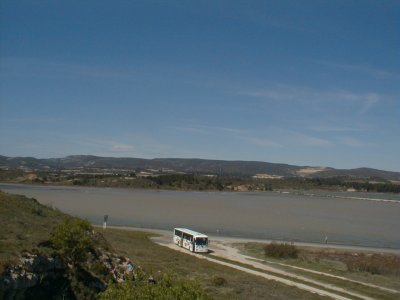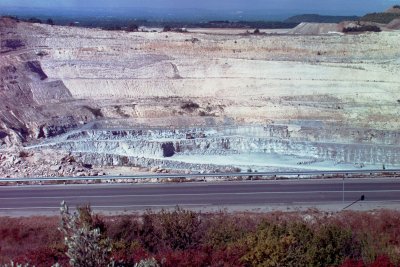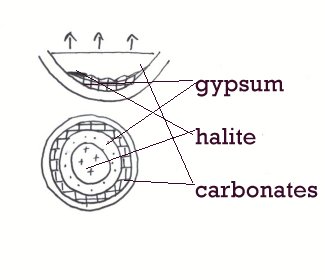
Route 3
CONTINENTAL PLAYA LAKE SABKHA
Evaporite deposits of intracontinental desert regions differ in many respects
from the marine evaporites. Since evaporite minerals occur widely in areas of dry or arid climate, saline lake deposits are typically associated with aeolian and alluvial fan facies.

source Roger Suthren
Photograph of evaporitic lake
Saline minerals are found in three principle environments:
Perennial saline lakes receive inflow from at least one perennial river or spring, ephemeral saline pans are fed only from episodic run-off, although springs and groundwater may contribute significant inflow (Reading, 1996).
Apart from halite and gypsum-anhydrite, there are a number of of evaporitic minerals which in large concentration are only found in saline lakes.
Salts may come from normal surface or shallow groundwaters, from hydrothermal sources, from recycling of older evaporite deposits, or to be transported to the basin as aeolian dust and aerosols.
Concentration to the point where saline minerals begin to precipitate can occur entirely within the lake, much of the carbonate and gypsum is precipitated before the inflow reaches the saline pan, at springs or zones where groundwater seeps from the toes of the alluvial fans.

Source Roger Suthren
Photograph of an ancient evaporitic lake deposit
The modes of formation of saline minerals is similar to that in marine hypersaline lagoons and salinas. Modern ephemeral saline pans alternate between periods of:
The resulting deposits are cyclic and consist of alternating millimeter to dicentimeter scale layers of halite and mud, which is deposited during brief periods of flooding (Reading, 1996).
There is commonly a zoneation of evaporite minerals with in a salt lake, of the least soluble occurring around the edge and the most soluble being precipitated in the lake center, a bulls eye pattern (Tucker, 1991).

Source Roger Suthren
Photograph of an evaporitic lake showing zonation
 |
Diagram adapted from Tucker, (1991). |
Evaporites deposited subaqueously in lakes will have similar features to marine subaqueous evaporites. Salt lakes are commonly surrounded by inland sabkhas and saline mudflats and saline pans are also common in deserts.
This page was created by Pamela Williams
Last Modified:18/06/02